Ancient Greek Colonies of Magna Graecia
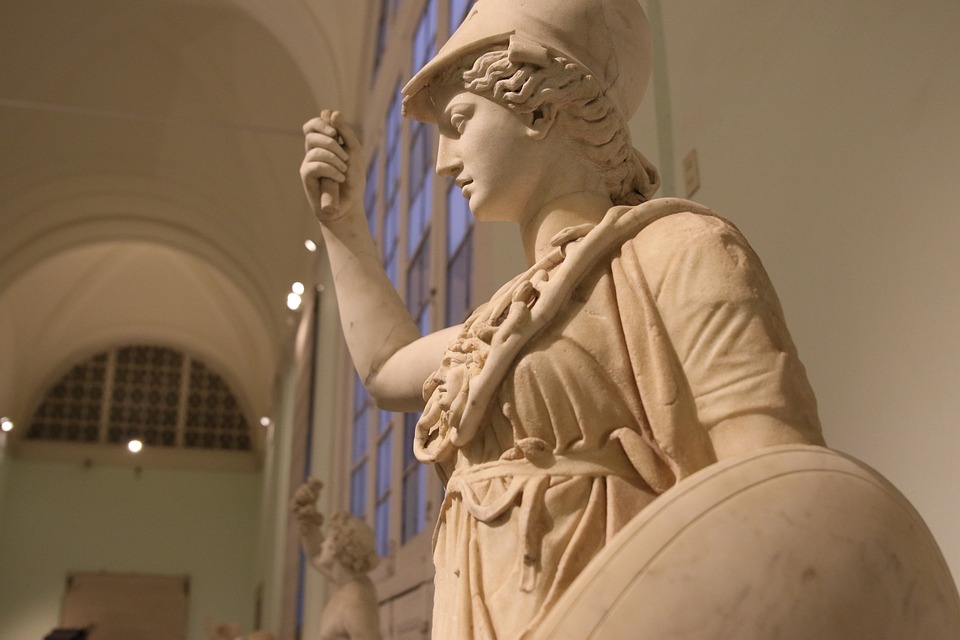
Ancient Greek colonies of Magna Graecia were founded by the seafaring Greeks to develop the emporium, for raw materials and for security from invaders.
Emporium in ancient Greek commerce, refers to a trading post or market: ἐμπόριον (trade) by traders known as emporoi (ἕμποροι) that was an influential part of the Mediterranean world carried out by merchants who sold beautiful Greek pottery, wine, olives, olive oil, marble, grains, spices, cheese, honey, meat and tools which were all in great demand abroad.
The southern half of Italy became known as 'Greater Greece', both by Romans in the latin term Magna Graecia and in the Greek Megalē Hellas (Greek: Μεγάλη Ἑλλάς) applied to all the ancient Greek city-states inhabited by Greeks around the Mediterranean, coastal areas of southern Italy and Sicily.
Greek settlements in Italy are confirmed from the 8th century BC onward with evidence of Greek trade from even earlier.
More than 46 ancient Greek colonies were founded in Sicily and more than 22 in southern Italy to form what the Romans called Magna Graecia in the present-day Italian regions of Calabria, Apulia, Basilicata, Campania and Sicily that were settled by ancient Greeks that continued to maintain trade, religious and sporting activities with their mainland, Greek mother cities.
The Hellenic culture of Magna Graecia left a lasting legacy on the later Roman world and ultimately, western civilization.
Pithekoussai at Ischia
Pithekoussai at Ischia
The Greek emporium, Pithekoussai at Ischia in the Bay of Naples was established about 800 BC by Euboeans whose two principal mother cities were Chalcis and Eretria. They, in turn, settled other ancient Greek colonies in Magna Graecia such as Cumae and Rhegium.
Pithekoussai, with its beautiful harbor, was the first Greek trading colony, established as an emporion for reaching important resources such as copper and tin.
The city-state produced beautiful Greek pottery of the eighth century BC and sold both original imports from Greece as well as locally made with the potter's clay of the island.
Nestor's Cup
The historic Cup of Nestor (legendary king of Pylos in Homer's Iliad and Odyssey) is an 8th century BC wine cup discovered in 1954 in Lacco Ameno (Pithekoussai, on Ischia) which has a three-line inscription of the earliest writing of the Greek alphabet to reference Homer's epics.
The text reads, “I am Nestor's Cup, good to drink from. Whoever drinks this cup empty, straightaway Desire for beautiful-crowned Aphrodite will seize him.”
The Cup is displayed at the Museo Archeologico Nazionale di Villa Arbusto, Lacco Ameno (Ischia Island).

Croton
Croton (Greek: Κρότων) was founded in 710 BC as an ancient Greek, Achaean colony whose inhabitants were famous for producing winners in the Olympics and the other Panhellenic Games from 588 BC onward.
According to Herodotus, the physicians of Croton were considered the finest of the 5th century BC Greek world.
Alcmaeon of Croton
Alcmaeon of Croton (Greek: Ἀλκμαίων) (born 510 BC) was one of the most eminent natural philosophers and medical theorists of antiquity whose work in biology and his originality made him a pioneer.
The medical school of Croton was regarded as the most famous where illnesses were studied in a scientific manner.
Pythagoras of Samos
Pythagoras of Samos (Πυθαγρας ὁ Σaμος, 580-500 BC) who is famous for the Pythagorean Theorem went to Croton from about 530 BC and established his Pythagorean school of thought.
He also formed a society of 300 disciples who were sympathetic toward aristocratic government.
Milo of Croton
Milo or Milon of Croton, was a famous 6th century, ancient Greek athlete who became a 6-time wrestling champion at the Ancient Olympic Games in Greece, 7-time winner at the Pythian Games, a 10-time winner at the Isthmian Games and a 9-time winner at the Nemean Games.
As a young boy, Milo admired the Greco-wrestlers training in Croton and was inspired by their unbelievable strength and well-developed bodies and made the decision to become just like them.
He gained enormous strength by lifting a newborn calf and carrying it on his shoulders every day for the next four years.
As the calf grew, Milo was lifting a four-year-old bull with ease.
He achieved his dream to become strong when he discovered the secret of progressive weight training that builds strength over regular effort.
His name is still proverbial for extraordinary strength.
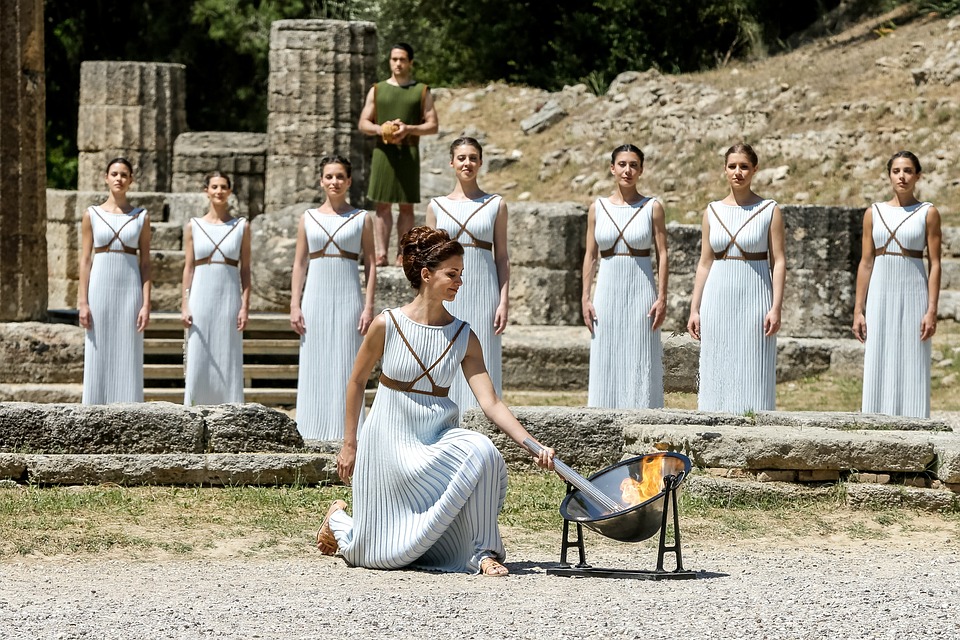
Neapolis (Naples)
Ancient Greek colonies of Magna Graecia included Naples which was founded twice by ancient Greeks.
Rhodes established a small commercial port on the islet of Megaride in the Gulf of Naples in the 9th century BC and named it Parthenope (Παρθενόπη) after one of the Sirens (bird-women) in Greek mythology who threw herself into the sea after she failed to bewitch Ulysses (legendary hero of Homer's epic poem, the Odyssey) with her song.
By the 8th century BC, Parthenope was expanded by Greeks from Cumae in mainland Italy, on Pizzofalcone Hill.
In the 6th century BC, it was refounded by the aristocracy of Cumae as Neápolis (“New City”) as a "second Cumae.
Neapolis developed the orthogonal, Hippodamian street grid plan (streets intersecting at right angles) so it could be recognized as the city of Helios/Apollo, the sun-god of the Greeks.
The city eventually became one of the foremost cities of Magna Graecia.
Neapolis became the first Roman acquisition when it was conquered in 327 BC but, retained its Greek language and culture throughout the Greco-Roman era.
Sybaris
Sybaris (Ancient Greek: Σύβαρις) was founded in 720 BC by Achaean and Troezenian (northeastern Peloponnese) settlers.
It became one of the most important Ancient Greek colonies of Magna Graecia, situated on the Gulf of Tarentum in southern Italy, between the two rivers, Crathis (Crati) and Sybaris (Coscile).
Sybaris prospered due to its fertile land and busy port.
The city minted its first coins dating to approximately 530 BC using the Achaean weight standard which was shared with the other Achaean colonies of Kroton, Caulonia and Metapontum.
In the 6th century BC, Sybaris enacted intellectual property laws to protect culinary creations of chefs and bakers for a period of 1 year
Its inhabitants became famous for their feasts and sensuous pleasure to the extent that "sybaritic" became a byword for opulence, luxury, and excess.

Ancient Greek Colonies of Magna Graecia
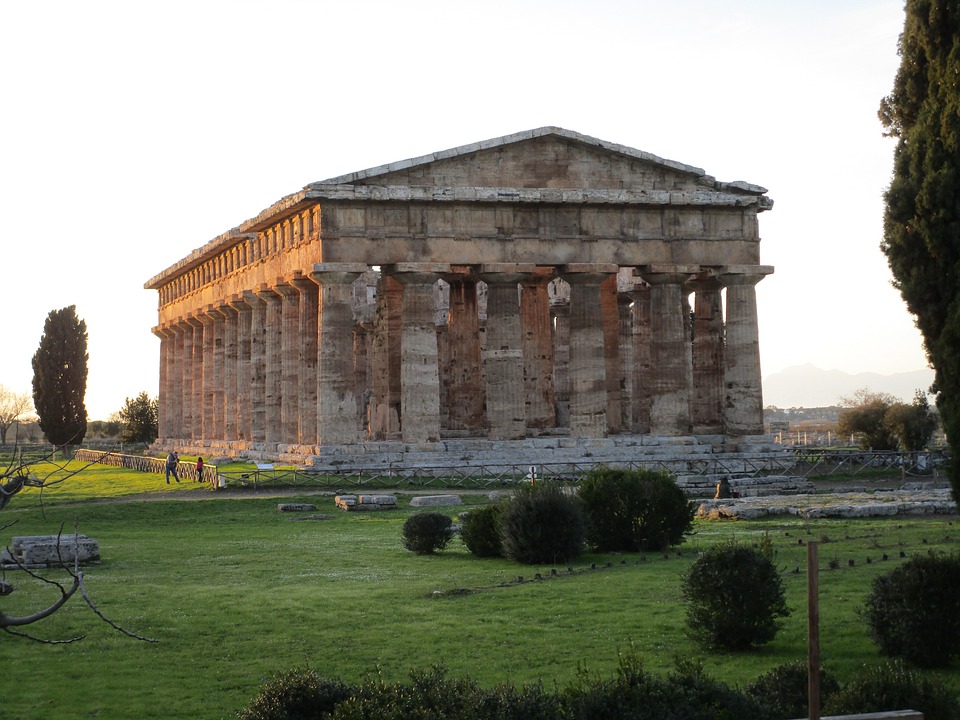
Syracuse - Sicily
Ancient Greek colonies of Magna Graecia founded 46 settlements in Sicily.
Syracuse was founded in 734 BC by Greek Corinthian colonists led by the aristocrat, Archias.
It quickly grew and prospered as a commercial center and the most beautiful city of Magna Graecia that could rival Athens.
Dionysius I (Dionysius the Elder: 430 — 367 BC), tyrant of Syracuse from 405 BC made it one of the the most powerful Greek city-states of the Western Greek colonies.
The city was rich in Greek culture and architecture.
It also founded other colonies in Sicily at Akrai, Kasmenai, Akrillai, Helorus and Kamarina.
Archimedes
Father of Mathematics
Syracuse was the birthplace of the pre-eminent mathematician and engineer Archimedes (287 - 212/211 BC) who is famous for his mathematical genius and inventions which
include:
*His discovery of the relation between the surface and volume of a sphere and its circumscribing cylinder.
*His formulation of a hydrostatic principle (known as Archimedes’ principle) and a device for raising water, still used, known as the Archimedes Screw.
Archimedes died during the Siege of Syracuse that ended either 212 or 211 BC.
He was killed by a Roman soldier at his home despite orders that he should not be harmed, while trying to solve a complex mathematical problem.
When the Roman soldier raised his sword, Archimedes last words were "Do not disturb my circles", referring to the circles in his mathematical drawing.
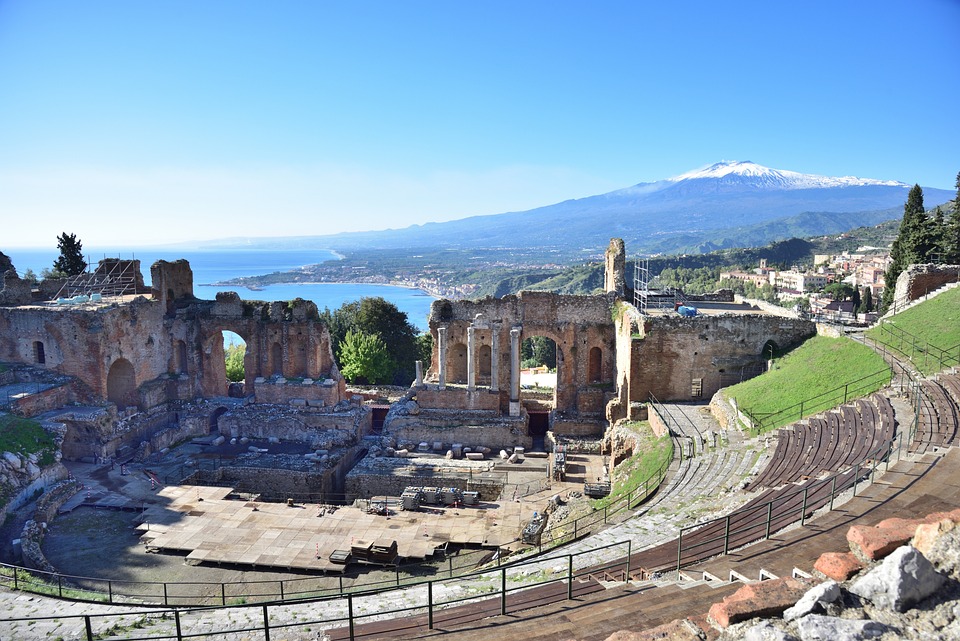
Tarentum
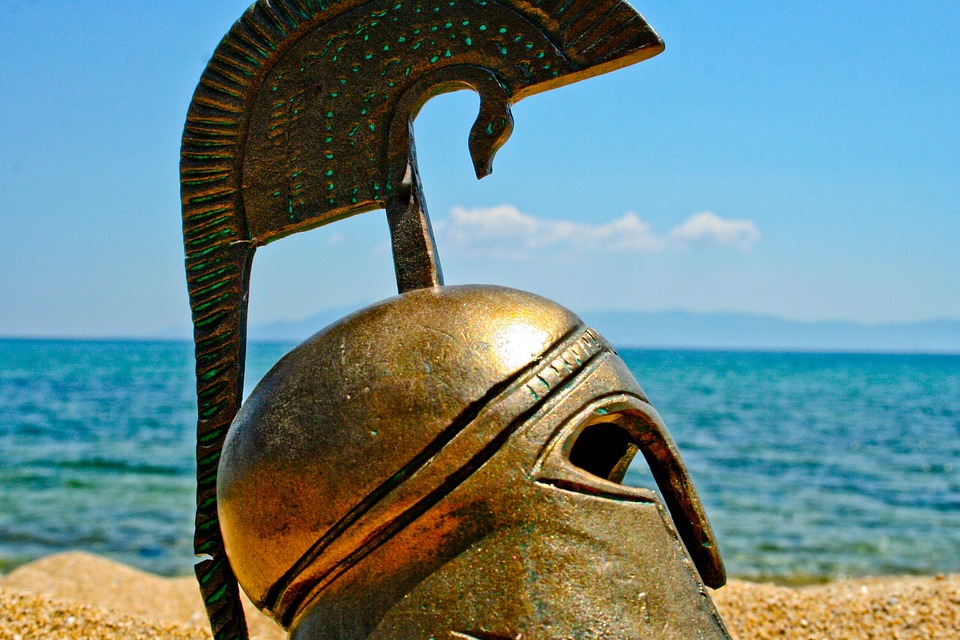
Ancient Greek colonies of Magna Graecia were also established by Spartans, the strongest land-based power in the Peloponnese.
Tarentum (Greek:Taras - Τάρας ) located on the southern coast of Apulia, Italy, was a Greek colony founded by Spartans in the 8th century BC during the period of ancient Greek colonization of Magna Graecia.
Tradition says the city was founded in 706 BC by the Spartan hero Phalanthus.
Taras became an important cultural, economic and military power of Magna Graecia that flourished with philosophers, writers and athletes.
It had two excellent harbors and a population of 300,000 people by the 5th century BC with hegemony (dominance) over other Greek colonies of southern Italy.
Tarentum's (Taras) museum today, boasts one of the largest collection of Greek pottery many fine bronzes, gold jewellery and floor mosaics.
The Tale of Taras
In Greek mythology, Taras, the son of Poseidon, the god of the sea and waters, was the eponymous founder of the Greek colony in Magna Graecia.
When Taras was shipwrecked, his father rescued him by sending a dolphin which he rode to the south of Italy where he founded and named both the city and the river, after himself.
The symbol of the city would be a boy riding a dolphin.

Greco-Roman Culture
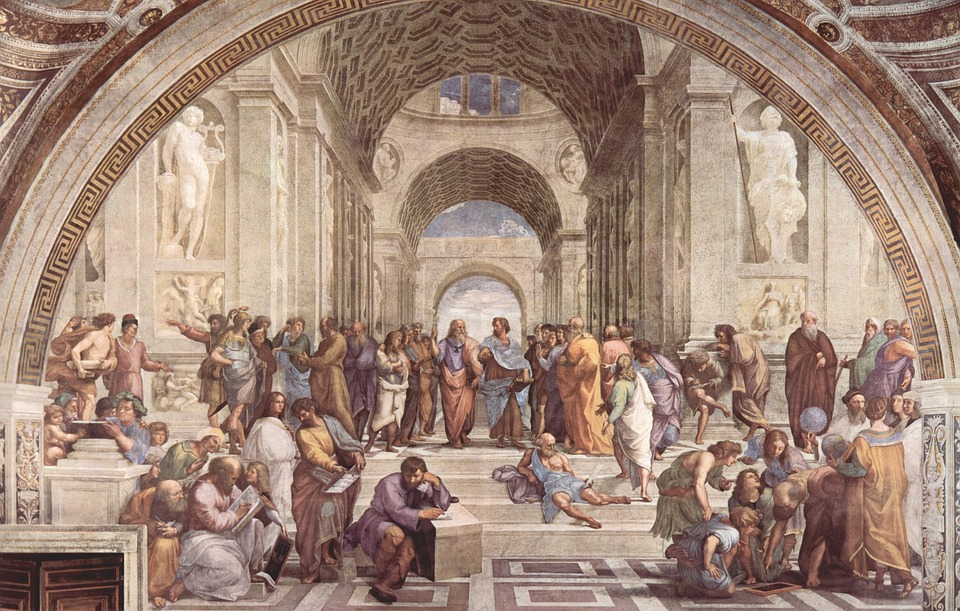
Roman culture was in fact Greco-Roman.
The Romans recognized the richness of Greek culture and emulated the Greek styles and themes.
Classical antiquity therefore is the cultural history that refers to the peoples and countries whose culture were influenced by the language, traditions, government and beliefs of the ancient Greeks and Romans from the 8th century BC to the 5th century AD.
The Byzantine Empire (395 AD - 1453 AD) became the leading civilization of the world that kept the Greco-Roman culture alive for nearly a thousand years until the fall of Constantinople to the Ottoman Turks in 1453.
The Renaissance from the 14th to the 17th century that began in Floerence, Italy, re-discovered and preserved the Greco-Roman cultural heritage throughout the western world.
Western Culture is Based on Three Historic Factors
1. Ancient Greece
2. Roman Empire
3. Christianity
Greek culture influenced all three historic factors.
Terms that define these three historic factors are "Greco-Roman culture", "Judeo-Christian culture" and "Judeo-Hellenic-Christian culture".
The Greeks called their land Hellas and themselves Hellenes.
It was the Romans who called them Greeks - (Graeci)
Ezine Articles Author Link
Click on the Link Below

Newsletter Opt-in-Form
The Keen Traveler
Your second block of text...
Recent Articles
-
The Power Within
Jan 07, 26 05:19 AM
The power within empowers you to shape your own life and goals that are aligned with your true self. -
When all we Have is God
Dec 20, 25 04:21 AM
When all we have is God in times of loss hardship or loneliness God's Presence offers refuge, strength and a purpose for the future. -
Beauty of Christmas
Dec 11, 25 04:22 AM
The beauty of Christmas is the celebration of the real Christmas Story with the Birth of Jesus Christ, the Son of God, Who came to bring love, hope, and salvation to the world.


